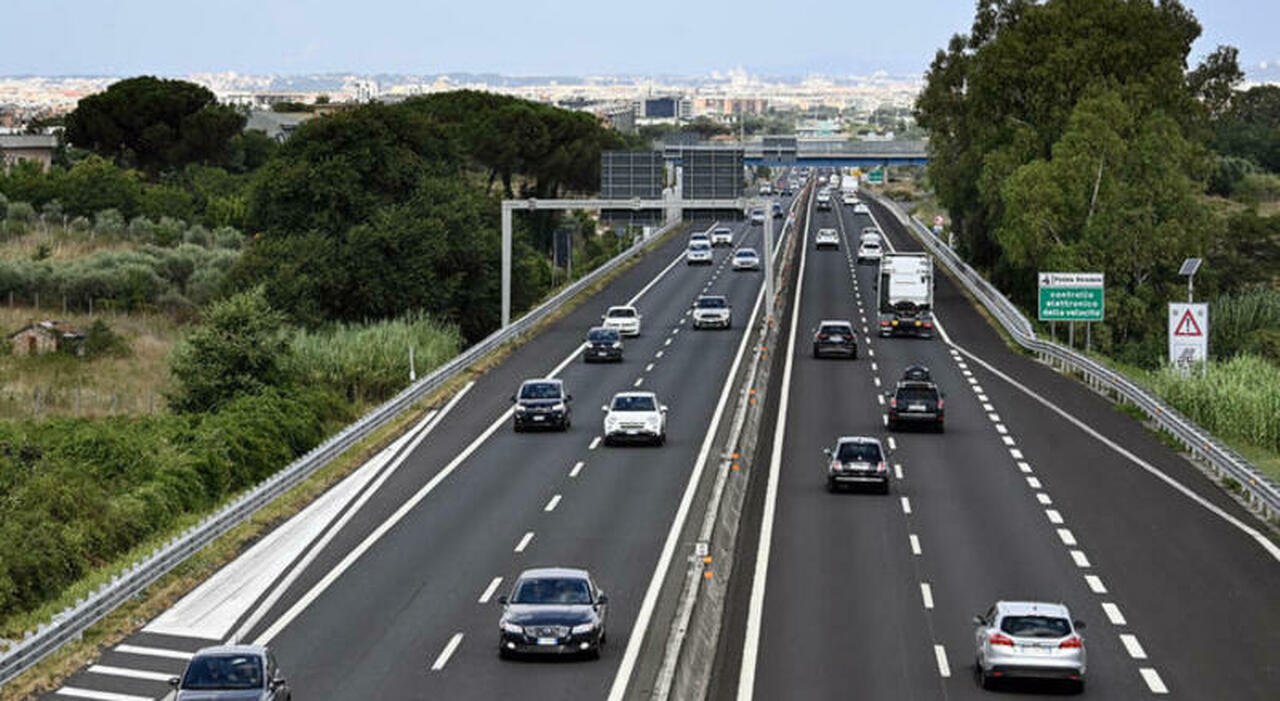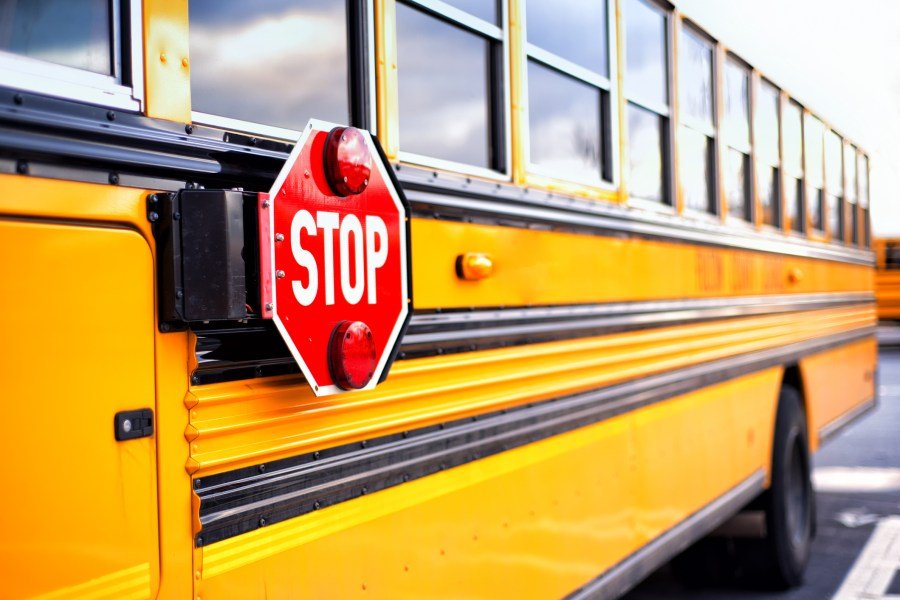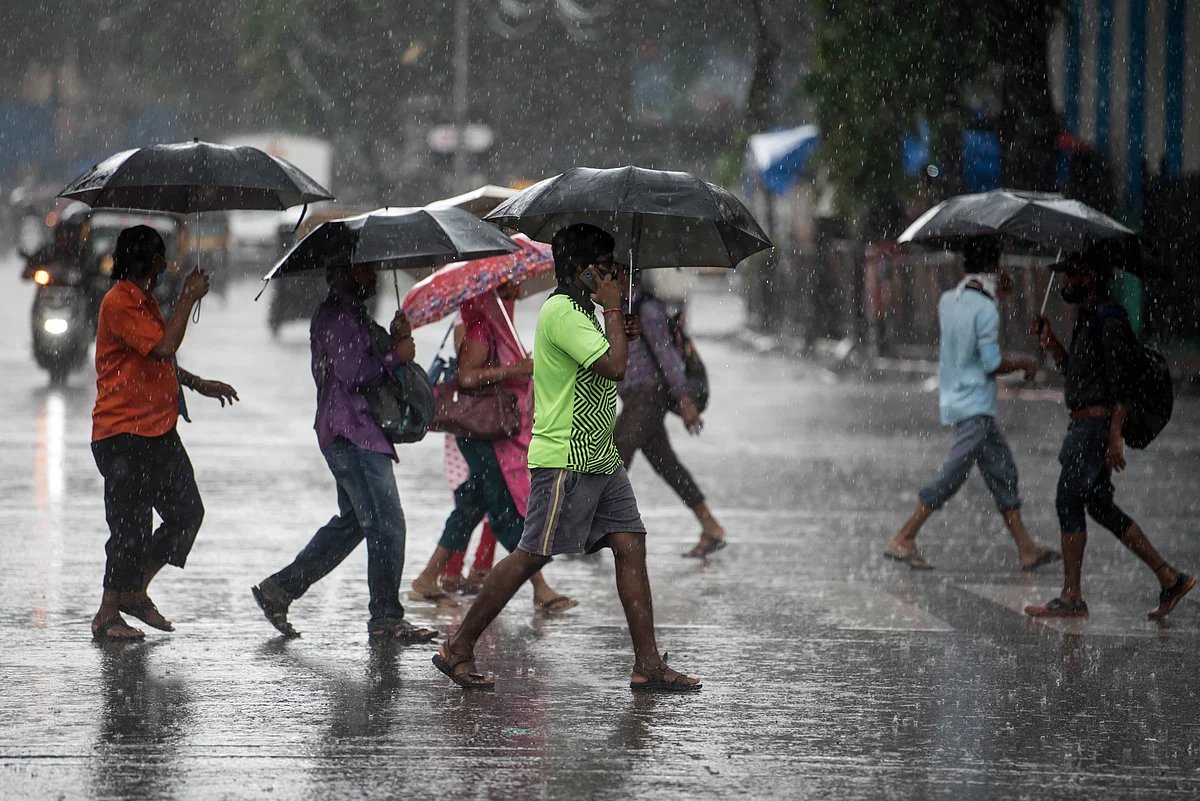Tips & Advices
Is it safe to travel to Jordan right now? Latest travel advice

Fighting between Israel and Iran has been going on since June 13 and is likely to continue for the foreseeable future. Although Jordan is not directly involved in the conflict, it has been affected. The country had to intercept armed drones launched by Iran due to fears that they could land in Jordan, and it has closed its airspace twice due to the threat of missiles. Given Israeli airspace is still closed, the land border with Jordan has become the main point of exit for visitors leaving Israel, but the crossings are only open for a limited number of hours during the day. The situation is ongoing and could change at any moment — here’s what you need to know right now.
What’s the latest government advice about travelling to Jordan?
On June 22, the UK Foreign Office update its advice following the US military strikes against Iran. It stated that ongoing hostilities in the region and between Israel and Iran have the potential to deteriorate further, quickly and without warning and flagged that the current situation has disrupted air links and may disrupt road links and border crossings. In addition, demonstrations and protest activity may take place.
It advises against all travel to anywhere within 3km of Jordan’s border with Syria — this advice was in place before war broke out between Israel and Hamas. It considers the rest of the country to be generally safe for travel. However, for those planning a trip to Jordan, or who are due to travel imminently, there are a few things to bear in mind.
Jordan temporarily closed its airspace twice amid the exchanges of fire between Israel and Iran. Although Jordanian airspace has since reopened, the Foreign Office says that “airports and airspace may close at short notice”. It advises those in Jordan to contact their airline and to follow the advice of the local authorities. For those yet to travel to Jordan, the Foreign Office advises checking with the airline first. It’s also worth speaking to your travel insurance provider to clarify what may or may not be covered in the event of an emergency.
There is a risk of fragments and debris from missiles landing in Jordan. The Foreign Office advises: “If you encounter any projectile debris or fragments you should move away from them immediately and contact local authorities.”
Meanwhile, Jordan’s land borders with Israel have become one of the main points of exit for visitors leaving Israel. These are still in operation, and are open for a limited number of hours each day, but the Foreign Office warns that these could close at any time. The Foreign Office says the three crossing points in Jordan are operating during the following hours:
• King Hussein/Allenby Bridge: 8am to 2.30pm
• The Northern (Sheikh Hussein/Bet Shean) crossing: 8.30am to 2.30pm
• The Southern (Wadi Araba) crossing: 8am to 8pm
On June 16, it was reported that the Foreign Office will dispatch rapid response teams to assist travellers making their way from Israel to the border with Jordan. If you’re still in Israel, you should register your details with the Foreign Office and the Israeli tourist board, which is coordinating departures. See the travel advice for Israel for further details.
Has Jordan been affected by the Israel-Hamas conflict?
Part of the border between Jordan and Israel is in the Dead Sea
GETTY IMAGES
Jordan has not been directly affected by the war between Israel and Hamas in the sense that it is not involved in any fighting. However, it has been among the Arab nations trying to broker peace between the two, and there have been protests within the country.
Jordan’s geographical proximity to Israel has also affected travel to the country. Jordanian airspace was closed for the duration of Iran’s October 1 missile attack in 2024, for example. On April 13, 2024, Jordan’s air force also intercepted and shot down dozens of Iranian drones that violated its airspace and were heading to Israel. And of course, its airspace was forced to close twice during the latest exchanges between Israel and Iran.
On the situation in Jordan, the Foreign Office said: “Following recent developments in Israel, Lebanon, the West Bank and the Gaza Strip, the security situation could change suddenly.
“In addition, there are reports of closures of the King Hussein/Allenby bridge crossing between Jordan and the West Bank. You should be aware of the risk of closures of the borders between Jordan and Israel and the West Bank, as well as possible road closures within Jordan, with no notice.”
Here’s what you need to know about the travel advice for other countries
• Is it safe to travel to Israel right now? Latest travel advice
• Is it safe to travel to Egypt right now? Latest travel advice
• Is it safe to travel to Turkey right now? Latest travel advice
• Is it safe to travel to Dubai right now? Latest travel advice
• Is it safe to travel to Morocco right now? Latest travel advice
Is it safe to travel to Jordan right now?
The UK Foreign Office is not advising against travel to Jordan, aside from its advice on avoiding the border with Syria.
In general, although most tourists have visited the country without incident, it is worth remaining vigilant.
Levels of crime are generally low in Jordan, with most incidents involving pickpocketing, bag snatching or theft from cars. You should keep your valuables secure and have your photo ID with you in case of checks.
According to the Foreign Office, disputes between tribes, families and other social groups can start without warning and turn violent or involve the use of firearms. It also states terrorists are likely to try to carry out attacks in Jordan — these could take place in tourist areas such as hotels, shopping malls, restaurants and tourist sites. The last high-profile incident was a knife attack at the Roman site in Jerash that left eight people injured in November 2019.
What are Jordan’s entry requirements?
Camels in the desert at Wadi Rum
GETTY IMAGES
British citizens will need a visa to enter Jordan for tourism which can be obtained on arrival. Your passport will need to have a minimum of six months’ validity on the day you arrive.
A tourist visa costs 40 Jordanian dinars (about £42) and is valid for one month. The visa can be extended for up to six months once you’re in Jordan. However, if you stay in the country for more than 30 days, you’ll need to take an HIV test and obtain a health certificate, which costs 20 dinars (about £21).
If you’re leaving the country via one of the road borders, you’ll also need to pay an exit tax of ten dinars (about £10); those leaving the country on a flight are exempt.
• Best things to do in Jordan
• Best time to visit Jordan
Is Jordan safe for female travellers?
Jordan is generally safe for female travellers but they can receive unwanted attention in the form of both verbal and physical harassment in more remote areas of the country. The Foreign Office says that occasionally these situations have escalated and there has been an increase in reports of sexual assault.
Female travellers should therefore take care when walking or travelling alone, during the day as well as at night. They should also avoid sitting in the front seat of a taxi.
Is Jordan safe for LGBT travellers?
A female traveller in Amman, capital of Jordan
GETTY IMAGES
The Foreign Office says that Jordanian law does not “explicitly prohibit homosexual acts”. However, public displays of affection between same-sex couples are not generally tolerated and could lead to arrest under other Jordanian laws.
Can you drink alcohol in Jordan?
Jordan is a predominantly Muslim country but alcohol is permitted. However, it’s illegal to consume alcohol on the street — it’s only allowed in bars, clubs, hotels and private homes.
You should also be aware that during Ramadan, while restaurants in cities such as Amman remain open during the day, eating in the street is likely to cause problems.
Tips & Advices
Essential Road Safety Tips for Summer Travel

Once again this year, the Highway Patrol, in anticipation of the massive summer exodus, wants to disseminate the useful vademecum to tackle and reach holiday destinations safely, advice that remains valid for any movement. Before setting off, it is good practice, first of all, to check the vehicle’s efficiency, with particular attention to the tire pressure and tread conditions which must not be less than 1.6 millimeters. Equally important, if the vehicle is equipped, is to also check the conditions of the spare wheel or otherwise the inflation kit. Check the engine fluid levels, brake pad wear, and therefore the correct functioning of all the vehicle’s lighting devices such as headlights, rear lights, brake lights, and turn signals. Equally important is the condition of the front and rear windshield wipers, whose proper functioning is essential for optimal visibility even in case of rain. The arrangement of the luggage must also be taken care of in such a way that the distribution of the loads does not unbalance the stability of the vehicle and, if using roof racks, always ensure they are well anchored. In case of transport, pets must be secured in the appropriate carriers. Before departure, avoid consuming large meals or drinking alcoholic beverages and possibly check the traffic and weather conditions along the route to be traveled. It is also reminded that it is mandatory for passengers in the front and rear seats to always wear seat belts and secure children in appropriate approved seats. For those traveling on two wheels, it is important to fasten the protective helmet properly and use protective measures. During the journey, proceed at a moderate speed, respecting the limits set by the road owner, exercising maximum caution if you decide to overtake using the appropriate lane. Traffic on the highway, the red and black flag days for August 2025. Avoid any distraction during the journey, especially using the smartphone, even for a very short moment because hundreds of meters are covered without the necessary attention. On the highway, it is reminded that it is allowed to occupy the emergency lanes only in cases of actual necessity, and if so, position the emergency triangle at least 100 meters from the broken-down vehicle, always wearing the reflective vest. Where possible, however, it is better to stop in the appropriate service areas. In any case, without further delay, contact the single emergency number (112) indicating the exact position and wait for the arrival of assistance. At the same number, all possible issues such as accidents, vehicles in trouble, objects on the road, or fires must be reported; in this regard, it is absolutely forbidden to throw cigarettes or matches out of the windows. In case of fatigue, it is advisable to reach a safe place for a stop, so as to resume normal attention conditions for safe and responsible driving. On the State Police website, in the area reserved for Italy’s Viability (https://www.poliziadistato.it/articolo/1815cb58d622d6ac985858152) the ‘Summer Exodus Plan 2025’ has been published where it is possible to find: – the intense traffic calendar (flags); – the mapping of the road and motorway sections most subject to traffic issues and related alternative itineraries (north – center – south and islands); – the geographical areas ordinarily subject to overflight by State Police and Carabinieri aircraft; – the railway police surveillance plan; – the mapping of speed detection systems (tutors) located on the motorway network.
© ALL RIGHTS RESERVED
This article is automatically translated
Tips & Advices
Mississippi school travel safety tips

JACKSON, Miss. (WJTV) – Mississippi parents and students are encouraged to stay safe while going to school and back home.
AMR in central Mississippi advised parents to teach their children the following rules to stay safe when traveling to or from school.
Getting on or off the bus:
-
Riders should stay outside the “danger zone” around the bus. The danger zone is ten feet wide all the way around the bus. For little children, say six “giant steps” At that distance from the bus, the bus driver can see a child.
-
If you drop something near the bus, first signal the driver and tell him or her. Never try to pick it up first because the driver may not be able to see you.
-
Always stay away from the wheels of the bus.
-
Hold on to the handrail on the bus.
-
Never assume other vehicles have stopped for the school bus. Keep watching for other vehicles as you walk in front of the bus.
-
If you must cross the street in front of the bus, walk at least ten feet ahead of the bus until you can turn around and see the driver.
-
Make sure the bus driver can see you.
-
Wait for a signal from the bus driver before beginning to cross.
-
When the bus driver signals for you to cross, walk across the road while also keeping an eye out for sudden traffic changes.
-
If you leave something on the bus, never go back to get it. The bus may already be moving and the driver might not see the child.
Getting to the bus stop:
-
Parents should walk smaller children to their stop.
-
Each child should be dressed in contrasting bright colors.
-
Leave home early enough to avoid running to the bus. Running to the bus can be dangerous.
-
Older children should watch the younger ones closely.
-
Children walking or standing in groups are easier for drivers to see than one child alone.
Waiting for the bus to arrive:
-
Always stand at least ten feet from the curb or edge of the road.
-
Do not run or play while waiting for the bus.
-
Do not take anything out of backpacks while waiting. That way, nothing gets dropped or blows away in the wind.
Getting on the bus:
-
Be sure the bus driver can see you and you can see the bus driver.
-
Enter the bus in a single file with the younger children first.
-
Never walk behind the bus.
While the bus is in motion:
-
Stay seated, facing forward.
-
Keep your hands to yourself.
-
Talk quietly. Don’t talk at all near railroad crossings so the driver can listen closely for sounds of a train.
-
Do not distract the driver.
-
Keep the aisles clear. Keep your belongings on your lap.
-
Do not block emergency exits with sports equipment or musical instruments.
Walking to and from school:
-
Always walk on the sidewalk when one is available.
-
Cross the street only at intersections or street corners. Do not “jaywalk.” If a crosswalk is painted on the street, use it.
-
Before you begin to cross the street, stop and look left, right and left again to spot oncoming cars.
-
If no cars are coming, it is safe for you to cross but continue looking left-right-left as you cross.
-
Do not dart into the street between parked vehicles.
Riding a bicycle to school:
-
Always wear a helmet when riding your bicycle.
-
Make sure that your helmet fits correctly.
-
Ride on the right side of the road in the same direction other vehicles are going.
-
If two or more bikers are together, ride one behind the other, not side by side.
-
Come to a complete stop before crossing each street.
-
Make sure clothes, shoes and the bicycle have reflective materials on them so drivers can see you more easily.
Thanks for signing up!
Watch for us in your inbox.
Subscribe Now
Copyright 2025 Nexstar Media, Inc. All rights reserved. This material may not be published, broadcast, rewritten, or redistributed.
For the latest news, weather, sports, and streaming video, head to WJTV.
Tips & Advices
Weather Updates Across India: Travel Disruptions, Flood Warnings And Safety Tips – Outlook Traveller
-

 Brand Stories3 weeks ago
Brand Stories3 weeks agoBloom Hotels: A Modern Vision of Hospitality Redefining Travel
-

 Brand Stories2 weeks ago
Brand Stories2 weeks agoCheQin.ai sets a new standard for hotel booking with its AI capabilities: empowering travellers to bargain, choose the best, and book with clarity.
-

 Destinations & Things To Do3 weeks ago
Destinations & Things To Do3 weeks agoUntouched Destinations: Stunning Hidden Gems You Must Visit
-

 Destinations & Things To Do2 weeks ago
Destinations & Things To Do2 weeks agoThis Hidden Beach in India Glows at Night-But Only in One Secret Season
-

 AI in Travel3 weeks ago
AI in Travel3 weeks agoAI Travel Revolution: Must-Have Guide to the Best Experience
-

 Brand Stories1 month ago
Brand Stories1 month agoVoice AI Startup ElevenLabs Plans to Add Hubs Around the World
-

 Brand Stories4 weeks ago
Brand Stories4 weeks agoHow Elon Musk’s rogue Grok chatbot became a cautionary AI tale
-

 Brand Stories2 weeks ago
Brand Stories2 weeks agoContactless Hospitality: Why Remote Management Technology Is Key to Seamless Guest Experiences
-

 Asia Travel Pulse1 month ago
Asia Travel Pulse1 month agoLooking For Adventure In Asia? Here Are 7 Epic Destinations You Need To Experience At Least Once – Zee News
-

 AI in Travel1 month ago
AI in Travel1 month ago‘Will AI take my job?’ A trip to a Beijing fortune-telling bar to see what lies ahead | China

